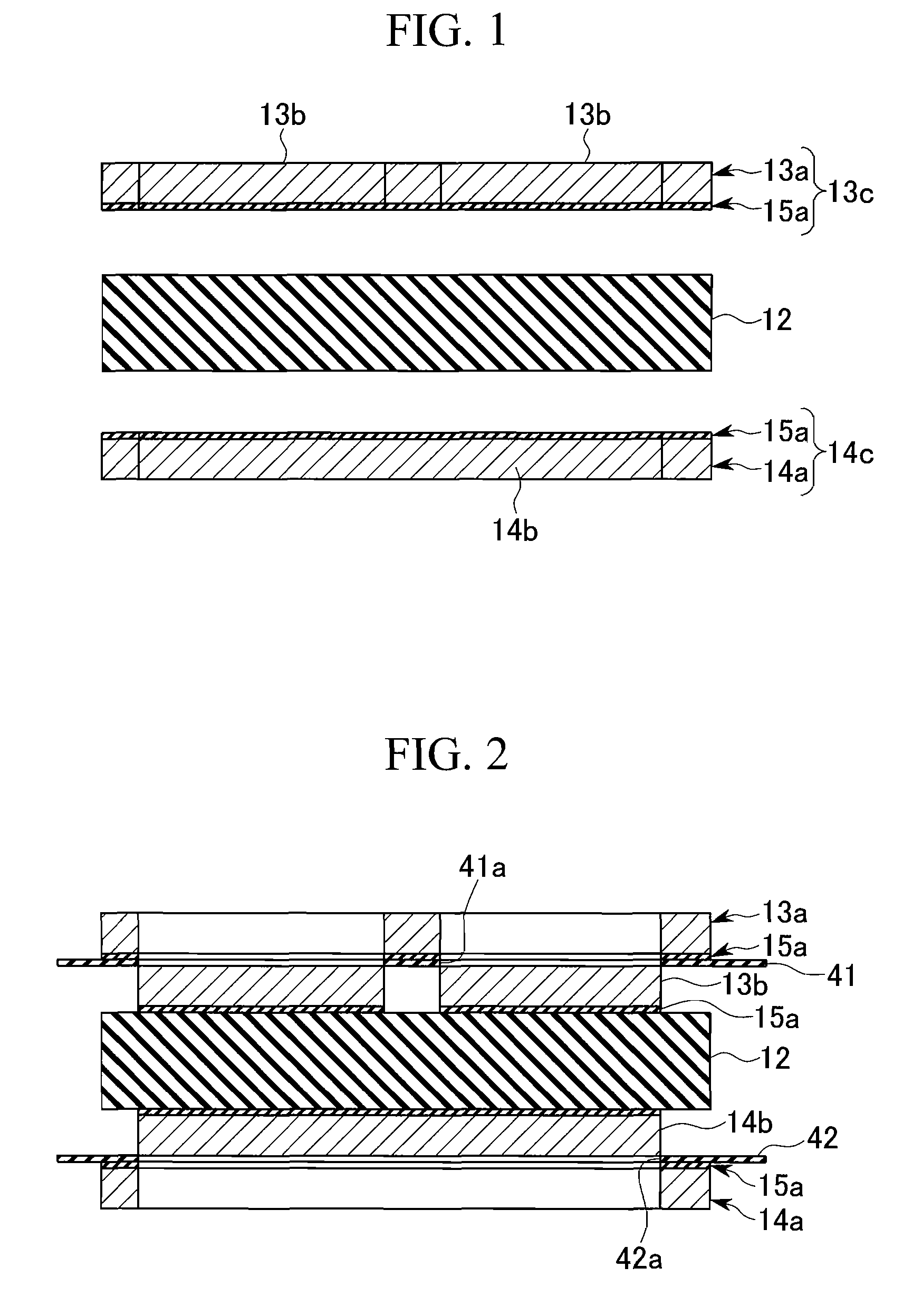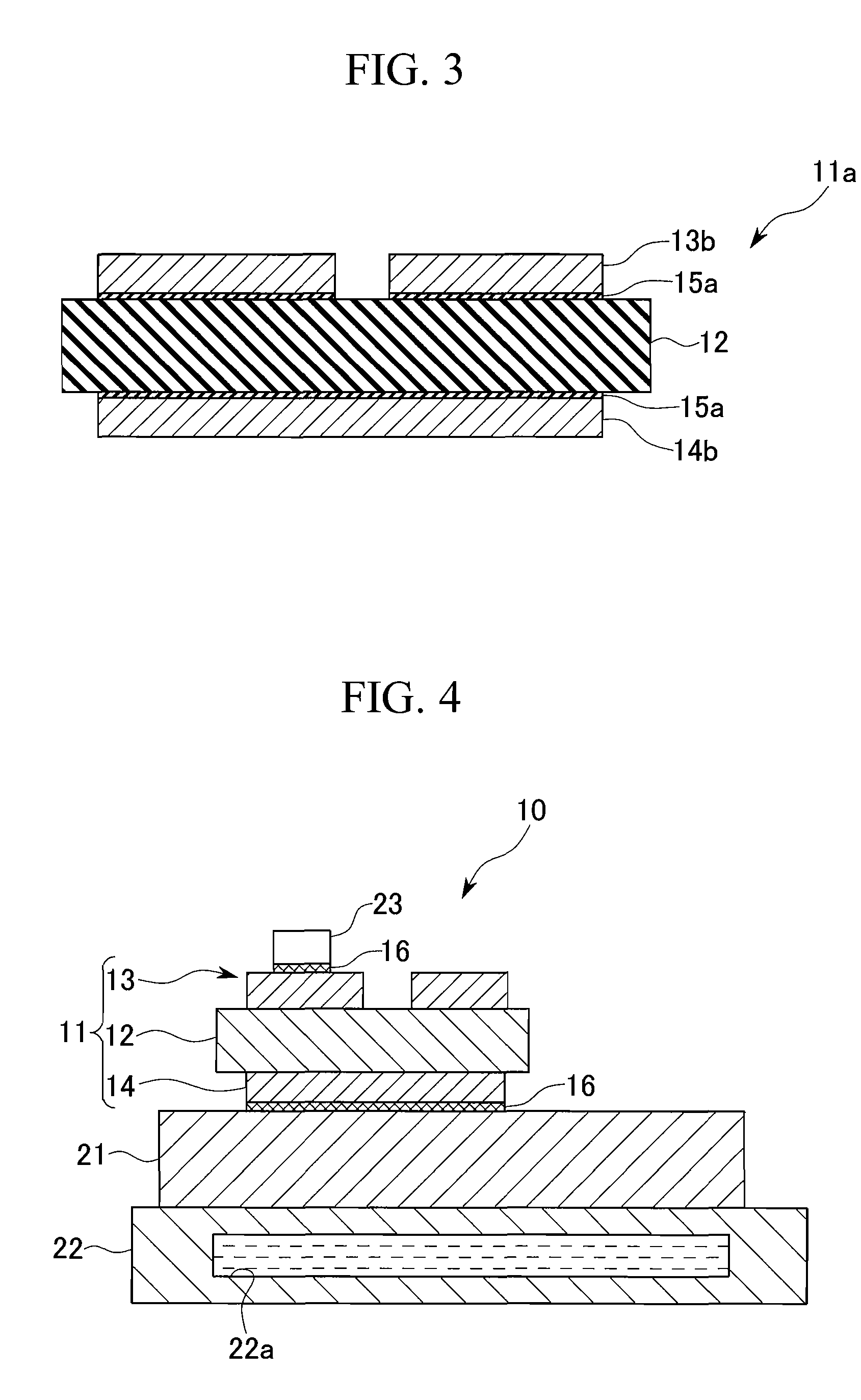Insulation Substrate, Power Module Substrate, Manufacturing Method Thereof, and Power Module Using the Same
- Summary
- Abstract
- Description
- Claims
- Application Information
AI Technical Summary
Benefits of technology
Problems solved by technology
Method used
Image
Examples
Embodiment Construction
[0046] Hereinafter, an embodiment according to the first group will be described with reference to the drawing. FIGS. 1 to 3 are process views a method of manufacturing a power module substrate according to the first group. FIG. 4 shows a power module 10 to which a power module substrate formed by the manufacturing method shown in FIGS. 1 to 3. The power module 10 includes a power module substrate 11, a radiating element 21, a cool sink 22, and a semiconductor chip 23 serving as a heating element.
[0047] In the power module substrate 11, a conductive pattern 13 is provided at an upper surface of a ceramics substrate 12 formed of AlN, Al2O3, Si3N4, or SiC, and a metal layer 14 is provided at a lower surface thereof. The conductive pattern 13 and the metal layer 14 are formed of pure aluminum or an aluminum alloy, and are joined with the ceramics substrate 12 by an Al—Si or Al—Ge brazing sheet 15a, as described below.
[0048] Then, the semiconductor chip 23 is joined with an upper surf...
PUM
| Property | Measurement | Unit |
|---|---|---|
| Height | aaaaa | aaaaa |
| Height | aaaaa | aaaaa |
| Height | aaaaa | aaaaa |
Abstract
Description
Claims
Application Information
 Login to View More
Login to View More - R&D
- Intellectual Property
- Life Sciences
- Materials
- Tech Scout
- Unparalleled Data Quality
- Higher Quality Content
- 60% Fewer Hallucinations
Browse by: Latest US Patents, China's latest patents, Technical Efficacy Thesaurus, Application Domain, Technology Topic, Popular Technical Reports.
© 2025 PatSnap. All rights reserved.Legal|Privacy policy|Modern Slavery Act Transparency Statement|Sitemap|About US| Contact US: help@patsnap.com



